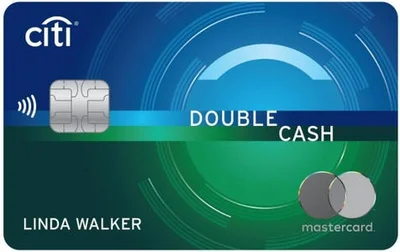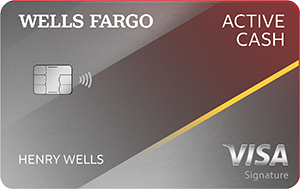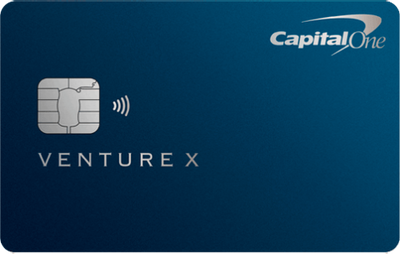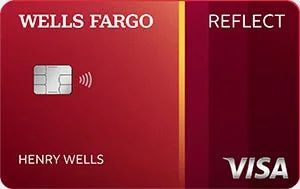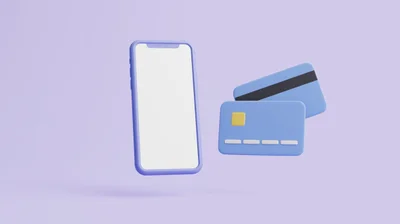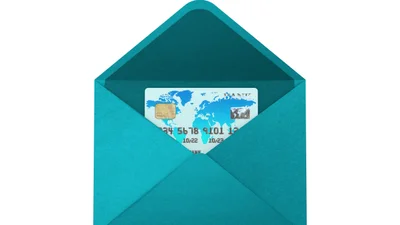Best credit cards of April 2024
Updated 1:46 a.m. UTC April 3, 2024
Editorial Note: Blueprint may earn a commission from affiliate partner links featured here on our site. This commission does not influence our editors' opinions or evaluations. Please view our full advertiser disclosure policy.
With so many options available, finding the best credit card in 2024 can be overwhelming. Although many credit cards offer a wide variety of benefits from rewards to low APR offers to travel and purchase protections and other perks, the most important consideration is finding the card that best fits your spending habits and financial situation.
We analyzed an extensive list of credit cards, from various issuers, to choose the best credit cards in 2024. Here is our selection:
Editor’s Note: This article contains updated information from a previously published story.
Choosing the best credit card made easy
Short on time? Here’s a few of the top rated cards hand-picked by our experts
Top pick for cash rewards: Chase Freedom Flex℠
*
The information for the Chase Freedom Flex℠ has been collected independently by Blueprint. The card details on this page have not been reviewed or provided by the card issuer.
Top pick for airline travel: Chase Sapphire Preferred® Card
Top pick for businesses: Ink Business Cash® Credit Card
Best credit cards of April 2024
- Wells Fargo Active Cash® Card: Best 2% cash rewards card.
- Chase Sapphire Preferred® Card: Best airline credit card.
- Chase Sapphire Reserve®: Best hotel card.
- Ink Business Cash® Credit Card: Best business credit card.
- Discover it® Student Cash Back: Best student credit card.
- Chase Freedom Flex℠: Best cash-back credit card.
- Capital One Venture X Rewards Credit Card*: Best travel credit card.
- Wells Fargo Reflect® Card*: Best intro APR credit card.
Why trust our credit card experts
Our team of experts evaluates hundreds of credit cards and analyzes thousands of data points to help you find the best card for your situation. We use a data-driven methodology to determine each rating. Advertisers do not influence our editorial content. You can read more about our methodology below.
- 250+ cards analyzed.
- 20+ data points considered.
- 5-step fact-checking process.
Compare the best credit card offers
Earn a $200 cash rewards bonus after spending $500 in purchases in the first 3 months.
Earn 60,000 bonus points after you spend $4,000 on purchases in the first 3 months from account opening. That’s $750 when you redeem through Chase Travel℠.
Earn 60,000 bonus points after you spend $4,000 on purchases in the first 3 months from account opening. That’s $900 toward travel when you redeem through Chase Travel℠.
Earn $350 when you spend $3,000 on purchases in the first three months and an additional $400 when you spend $6,000 on purchases in the first six months after account opening.
INTRO OFFER: Unlimited Cashback Match for all new cardmembers – only from Discover. Discover will automatically match all the cash back you’ve earned at the end of your first year! So you could turn $50 cash back into $100. Or turn $100 cash back into $200. There’s no minimum spending or maximum rewards. Just a dollar-for-dollar match.
Earn a $200 bonus after you spend $500 on purchases in your first 3 months from account opening,
Earn 75,000 bonus miles when you spend $4,000 on purchases in the first 3 months from account opening, equal to $750 in travel.
Why this card made the list
Earning simple rewards is twice as nice with the Wells Fargo Active Cash® Card. With this no-annual-fee card, you’ll earn 2% cash rewards on purchases, without having to track different categories or spending caps. Plus it comes with cellphone protection when you pay your bill with the card and a helpful 0% intro APR for the first 15 months on purchases and qualifying balance transfers, then a 20.24%, 25.24%, or 29.99% variable APR applies thereafter. Balance transfers made within 120 days qualify for the intro rate and fee of 3%. After that a fee of up to 5%, with a minimum of $5 applies, which can be a boon for anyone trying to save money on high interest rates.
- Annual fee: $0.
- Rewards: 2% cash rewards on purchases.
- Welcome bonus: $200 cash rewards bonus after spending $500 in purchases in the first three months of account opening.
- Foreign transaction fees: 3%.
- APR: 0% intro APR for the first 15 months on purchases and qualifying balance transfers, then a 20.24%, 25.24%, or 29.99% variable APR applies thereafter. Balance transfers made within 120 days qualify for the intro rate and fee of 3%. After that a fee of up to 5%, with a minimum of $5 applies.
Why this card made the list
It may surprise you that our top pick for best airline card isn’t a cobranded airline card. But the Chase Sapphire Preferred® Card earns rewards that can be used to book nearly any flight you’d like through Chase Travel, or transferred to over a dozen Chase travel loyalty airline partners, making it a highly flexible option when it comes to earning airline miles.
You may not get the free checked bag perks that come with airline-specific cards, but the Chase Sapphire Preferred card’s rewards also beat those of most cobranded airline cards, meaning you’ll earn free flights faster and a free flight saves you a lot more money than a free checked bag.
- Annual fee: $95.
- Rewards: 5 points per $1 on travel purchased through Chase Travel℠, 3 points per $1 on dining, select streaming services, and online grocery purchases (excluding Walmart, Target and wholesale clubs), 2 points per $1 on all other travel purchases and 1 point per $1 on all other purchases.
- Welcome bonus: 60,000 points after spending $4,000 on purchases in the first three months of account opening.
- Foreign transaction fees: $0.
- APR: 21.49% to 28.49% variable APR on purchases and balance transfers.
Why this card made the list
The Chase Sapphire Reserve® may come with a steep price tag but it serves up the perks on a silver platter. For starters the card offers a $300 annual travel credit, which can be used towards hotel nights or other eligible types of travel. If you book a room through Chase’s Luxury Hotel and Resort collection, you’ll get a room upgrade and daily breakfast at over 1,000 properties.
But perhaps most importantly, the card earns generous and flexible rewards on travel that can be used to book travel – including hotel nights – at a 50% increase in points value via the Chase Travel portal. Or, you can transfer your rewards to any of the issuer’s three hotel loyalty transfer partners.
- Annual fee: $550.
- Rewards: 5 points per $1 on flights and 10 points per $1 on hotels and car rentals purchased through Chase Travel℠ after the first $300 is spent on travel purchases annually. Earn 3 points per $1 on other travel and dining and 1 point per $1 on other purchases.
- Welcome bonus: 60,000 points after spending $4,000 on purchases in the first three months of account opening.
- Foreign transaction fees: $0.
- APR: 22.49% to 29.49% variable APR on purchases and balance transfers. A balance transfer fee of either $5 or 5% of each transfer, whichever is greater, applies.
Why this card made the list
The Ink Business Cash® Credit Card is ideal for small business owners. You don’t have to pay an annual fee to carry it, yet it comes with a robust cash-back program, a generous welcome bonus, an intro APR period and benefits including primary rental car coverage, purchase protection and extended warranty.
Plus, if you also happen to carry the Ink Business Preferred® Credit Card * The information for the Ink Business Preferred® Credit Card has been collected independently by Blueprint. The card details on this page have not been reviewed or provided by the card issuer. (which does charge a $95 annual fee), you can pool the rewards earned on your Ink Cash into your Ink Preferred account and get potentially outsize value by transferring your points to Chase’s airline and hotel partners to book award travel.
- Annual fee: $0.
- Rewards: 5% cash back on the first $25,000 spent in combined purchases at office supply stores and on internet, cable and phone services each account anniversary year, 2% cash back on the first $25,000 spent in combined purchases at gas stations and restaurants each account anniversary year, and 1% cash back on all other purchases.
- Welcome bonus: $350 after spending $3,000 on purchases in the first three months and an additional $400 after spending $6,000 on purchases in the first six months after account opening.
- Foreign transaction fees: 3% of each transaction in U.S. dollars.
- APR: 0% intro APR on purchases for 12 months, then a variable APR of 18.49% to 24.49% applies to purchases and balance transfers. There’s a balance transfer fee of either $5 or 5% of each transfer, whichever is greater.
Why this card made the list
With no credit score required to apply and a generous cash-back program, the Discover it Student Cash Back is our top pick for students looking to establish and build credit.
This card reports to the three major consumer credit bureaus, so if you pay on time and keep your utilization low, you can use it to build an excellent credit score over time. Note that you have to activate the rotating categories every quarter in order to earn the elevated rewards rate. Examples of categories the card has featured include grocery stores, gas stations, Amazon and more.
- Annual fee: $0.
- Rewards: 5% cash back at different places each quarter up to the quarterly maximum once activated and 1% cash back on all other purchases.
- Welcome bonus: Discover will automatically match all the cash back earned at the end of the first cardmember year.
- Foreign transaction fees: None.
- APR: 0% intro APR on purchases for 6 months, then a variable APR of 18.24% to 27.24% applies. There’s a 3% intro balance transfer fee, up to 5% fee on future balance transfers (see terms).
The information for the Chase Freedom Flex℠ has been collected independently by Blueprint. The card details on this page have not been reviewed or provided by the card issuer.
Why this card made the list
The Chase Freedom Flex℠ * The information for the Chase Freedom Flex℠ has been collected independently by Blueprint. The card details on this page have not been reviewed or provided by the card issuer. stands tall among cash-back cards since it combines two ways to earn high rewards: Rewards bonuses on quarterly rotating categories and tiered rewards in specific categories. No other card with a $0 annual fee offers this much rewards potential.
Note that you must activate the rotating categories every quarter in order to earn the elevated cash back. Examples of some of the categories the card has previously featured include Amazon, grocery stores, gas stations and select streaming services.
- Annual fee: $0.
- Rewards: 5% cash back on up to $1,500 in categories that rotate quarterly (requires activation), 5% cash back on travel purchased through Chase Travel℠, 3% cash back on dining and drugstores and 1% cash back on all other purchases.
- Welcome bonus: $200 bonus after spending $500 on purchases in the first three months of account opening.
- Foreign transaction fees: 3% of each transaction in U.S. dollars.
- APR: 0% intro APR for the first 15 months on purchases and balance transfers, then a variable APR of 20.49% to 29.24%. There is an intro balance transfer fee of either $5 or 3% of each transfer, whichever is greater, in the first 60 days. Then the fee is the greater of $5 or 5% of each transfer.
The information for the Capital One Venture X Rewards Credit Card has been collected independently by Blueprint. The card details on this page have not been reviewed or provided by the card issuer.
Why this card made the list
The Capital One Venture X Rewards Credit Card * The information for the Capital One Venture X Rewards Credit Card has been collected independently by Blueprint. The card details on this page have not been reviewed or provided by the card issuer. is our top pick for anyone seeking plush travel perks at a lower cost than competing premium cards. With access to more than 1,300 airport lounges worldwide through Priority Pass (enrollment required), Plaza Premium Group and Capital One’s own growing lounge network, a $300 annual credit for travel booked through Capital One Travel and the ability to transfer your miles to more than a dozen airline and hotel partners, this card is well worth the $395 annual fee.
The card comes with extensive travel-related perks including a 10,000-mile anniversary bonus, cellphone protection when you pay your bill with the card and extensive travel protections through the card’s Visa Infinite benefits*. And, an up to $100 application fee credit for Global Entry or TSA PreCheck.
- Annual fee: $395.
- Rewards: 2 miles per $1 on purchases, 5 miles per $1 on flights booked through Capital One Travel and on purchases through Capital One Entertainment and 10 miles per $1 on hotels and rental cars booked via Capital One Travel.
- Welcome bonus: 75,000 miles after spending $4,000 on purchases in the first three months of account opening.
- Foreign transaction fees: None.
- APR: 19.99% to 29.99% variable APR on purchases and balance transfers.
The information for the Wells Fargo Reflect® Card has been collected independently by Blueprint. The card details on this page have not been reviewed or provided by the card issuer.
Why this card made the list
Whether you need to finance a big purchase or transfer a balance from another bank, the Wells Fargo Reflect® Card * The information for the Wells Fargo Reflect® Card has been collected independently by Blueprint. The card details on this page have not been reviewed or provided by the card issuer. offers one of the longest introductory APR periods you’ll find anywhere of nearly two years, making it our top intro APR pick for both purchases and balance transfers.
It doesn’t offer rewards or a welcome bonus, but it’s a debt-busting go-getter. And, it does have some ongoing value after the intro period thanks to the card’s cellphone protection benefit.
- Annual fee: $0.
- Rewards: None.
- Welcome bonus: None.
- Foreign transaction fees: 3% of each transaction converted to U.S. dollars.
- APR: 0% intro APR for 21 months from account opening on purchases and on balance transfers made within the first 120 days, afterwards a 18.24%, 24.74%, or 29.99% variable APR applies. There’s a balance transfer fee of 5% with a $5 minimum.
Best rewards credit card: Chase Freedom Flex℠ * The information for the Chase Freedom Flex℠ has been collected independently by Blueprint. The card details on this page have not been reviewed or provided by the card issuer.
Why this card made the list
The Chase Freedom Flex℠ * The information for the Chase Freedom Flex℠ has been collected independently by Blueprint. The card details on this page have not been reviewed or provided by the card issuer. is more than just a cash-back powerhouse, the rewards earned on this card actually come as Chase Ultimate Rewards® which, in addition being redeemed as cash-back, can also be used to book travel through Chase.
Plus, if you hold the Freedom Flex and a qualifying premium Chase card — like the Chase Sapphire Reserve®, Chase Sapphire Preferred® Card and the Ink Business Preferred® Credit Card * The information for the Ink Business Preferred® Credit Card has been collected independently by Blueprint. The card details on this page have not been reviewed or provided by the card issuer. — you can transfer your rewards to more than a dozen of Chase’s travel transfer partners or use them to book travel through Chase at an increased redemption rate.
- Annual fee: $0.
- Rewards: 5% cash back on up to $1,500 in categories that rotate quarterly (requires activation), 5% cash back on travel purchased through Chase Travel℠, 3% cash back on dining and drugstores and 1% cash back on all other purchases.
- Welcome bonus: $200 bonus after spending $500 on purchases in the first three months of account opening.
- Foreign transaction fees: 3% of each transaction in U.S. dollars.
- APR: 0% intro APR for the first 15 months on purchases and balance transfers, then a variable APR of 20.49% to 29.24%. There is an intro balance transfer fee of either $5 or 3% of each transfer, whichever is greater, in the first 60 days. Then the fee is the greater of $5 or 5% of each transfer.
Best balance transfer credit card: Wells Fargo Reflect® Card * The information for the Wells Fargo Reflect® Card has been collected independently by Blueprint. The card details on this page have not been reviewed or provided by the card issuer.
Why this card made the list
When you need to transfer a balance from a high-interest credit card, you probably won’t find a longer intro APR offer on balance transfers anywhere than the nearly two years offered on the Wells Fargo Reflect® Card * The information for the Wells Fargo Reflect® Card has been collected independently by Blueprint. The card details on this page have not been reviewed or provided by the card issuer. . It does charge a reasonable balance transfer fee, but we think most people will find it’s worth it in exchange for the lengthy intro APR period.
- Annual fee: $0.
- Rewards: None.
- Welcome bonus: None.
- Foreign transaction fees: 3% of each transaction converted to U.S. dollars.
- APR: 0% intro APR for 21 months from account opening on purchases and on balance transfers made within the first 120 days, afterwards a 18.24%, 24.74%, or 29.99% variable APR applies. There’s a balance transfer fee of 5% with a $5 minimum.
Methodology
Our credit card team has spent hours analyzing hundreds of credit cards. We took a deep dive into the details of each product and that analysis, combined with our years of experience covering credit cards, informed us as we chose the best credit cards across a wide variety of categories. This list culled the top picks in each category.
Some of the factors considered in analyzing cards in the various categories include:
- Annual fees.
- Rewards potential and welcome bonuses.
- How a particular card compares to its peers.
- Length of any 0% intro APR periods.
- Benefits such as protections and travel perks.
- For credit-building cards, accessibility with limited or bad credit.
Credit card tips for 2024
A new year means a new beginning, and 2024 can be a fresh start when it comes to your credit card strategy. Here’s some ways to make the most out of a credit card in the months ahead:
- If you’re new to credit, focus on building a solid credit foundation. Building credit and increasing your credit score takes time and effort, but it’s worth it. A good or better credit score can save you money in the form of lower interest rates, as well as help you access better financial products.
- Always pay your entire credit card balance. It’s never a good idea to carry a balance on your card. You’ll be charged interest if you carry a balance, which can be costly. Paying your credit card balance off is an excellent strategy to avoid accumulating debt and incurring interest charges as you build credit.
- Get a clear picture of your financial situation. If you’re carrying debt, you should prioritize paying that balance off and stop making new purchases. Consolidating your debt can make it more manageable – and it could help you save on credit card interest charges. A popular debt consolidation tool is a balance transfer credit card.
- Consider your spending habits. Review your spending habits before choosing a credit card that earns rewards. Earning points, miles or cash back when you use your credit card can be rewarding. Not all rewards credit cards offer the same redemption choices.
Credit card basics for beginners
How do credit cards work?
Credit cards extend you a loan in the form of a line of credit. When you use a credit card, you’re borrowing money from the credit card company to make a purchase, then paying it back — with interest, if you don’t pay the balance in full by the end of the billing cycle.
Interest rates are typically expressed as an annual percentage rate or APR. The APR in your credit card agreement shows the interest applied to a balance over the course of a year, although most credit cards actually charge interest on your average daily balance.
Credit cards typically feature grace periods, which is a period of time before the transactions you make begin to accrue interest. If you pay off your balance during this grace period, which ends at the billing statement due date, you’ll avoid paying interest on your purchases. If you don’t pay off your balance before the due date, you lose the grace period. This means that if you carry a balance past your due date, not only will the carried balance accrue interest, but so will every purchase made after that.
The maximum amount you can borrow is your credit limit, but in order to maintain good credit you never want to “max out” a credit card. Instead, aim to never spend more than 30% of your credit limit before paying down the balance. The amount of credit you use, also known as your credit utilization rate, should be as low as possible.
When you make a purchase with your credit card, you are responsible for paying the full balance each month, including any interest charges. Paying off your balance in full, before the due date each month is the only way to avoid paying interest. Failing to make minimum payments will have a negative impact on your credit score.
How do credit card rewards work?
There are a few main types of credit card rewards and associated redemption options, though the specifics may vary by your issuer and your specific credit card. Here’s a basic breakdown:
| TYPE OF REWARDS CARD | CURRENCY EARNED | COMMON REDEMPTION OPTIONS |
|---|---|---|
Cash-back card
| Cash back
| Statement credit, deposit into bank account, paper check
|
Travel rewards card
| Points
| Travel bookings through the issuer’s portal, transfers to airline and hotel loyalty programs
|
Airline or hotel card
| Miles or points
| Flights or hotel stays with a specific airline (and partner airlines) or hotel chain
|
How does credit card interest work?
Credit card interest is typically only charged when you carry a balance on your card. The interest rate can vary from card to card, but typically ranges from 10% to 30%. Interest is charged on the outstanding balance each month and is compounded daily.
If you pay the balance in full each month, you will usually not be charged any interest due to your credit card’s grace period — but if you fail to pay off a balance, you’ll typically be charged interest on all new purchases until you’ve paid off your balance in full for at least two months.
Want more details? Here’s the nitty gritty on how credit card interest works.
Important credit card terms
Understanding a few key terms can make you a more informed consumer and help you evaluate what different credit cards have to offer. The following are some of the terms you should understand as you shop around for the best credit card:
- Interest rate. Your interest rate is what you’ll pay if you carry a balance on your credit card, expressed as an annual rate.
- APR. This term means “annual percentage rate”. While for some financial products, APR and interest rate are different, they’re the same when it comes to credit cards.
- Minimum payment. The minimum payment is the smallest amount you can pay by your due date and still remain in good standing. It may be calculated as a percentage of your principal debt plus any interest and fees from the prior billing period. If you only make the minimum payment each month, it can take a long time to pay off what you owe. Instead, we recommend paying off your card in full by the due date every billing cycle.
- Grace period. The grace period is the time between when your billing cycle ends and your payment is due. As long as you pay in full by the due date, you can typically avoid incurring interest charges thanks to the grace period. However, know that if you roll over a balance and incur interest charges, you may lose your grace period not only for that month but also for the month that follows.
- Credit limit. Your credit limit is the maximum you can spend on your credit card at one time before making payments to reduce your balance.
Types of credit cards
There are many different types of credit cards aimed at people with varying needs. Here’s a breakdown of some of the major types of cards on the market today and who they’re aimed at:
| TYPE OF CARD | WHAT IT’S BEST FOR | WHO SHOULD CONSIDER IT |
|---|---|---|
Earning points or cash back on purchases
| Someone with good to excellent credit
| |
Earning rewards on purchases and sometimes offering benefits such as travel protections or airport lounge access
| Someone with good to excellent credit who travels frequently or aspires to travel more
| |
A zero-interest promotional period on purchases and/or balance transfers
| Someone who needs to finance a purchase over time or transfer debt from another card
| |
A zero-interest promotional period on balance transfers (debt moved over from another credit card)
| Someone who needs to transfer debt from another card
| |
Establishing credit when you have no credit history or a limited credit profile
| Someone who hasn’t had a credit card before or perhaps has been an authorized user on a parent’s credit card
| |
Building credit while a student of an accredited two- or four-year institution of higher education
| Someone who is studying at a college or university and wants to start building credit
| |
Repairing credit when you’ve made financial mistakes in the past
| Someone with poor or fair credit who might struggle to get approved for other credit cards
| |
Managing business cash flow and in some cases earning rewards on spending
| A small business owner (even if your business is a one-person operation such as freelance writing or selling handcrafted items online)
|
As you can see, there’s often overlap between categories. For example, travel rewards credit cards are a subset of rewards credit cards, and balance transfer credit cards fall under 0% APR credit cards. Similarly, secured and student cards are specific types of credit-building cards.
How to choose the best credit card for you
“While there are dozens of great credit cards, American Express, Discover and Bank of America are always at or near the top of the annual J.D. Power Credit Card Satisfaction Study. They should, at the very least, be on your list of options,” said John Ulzheimer, a long-time veteran of the credit industry and founder of CreditExpertWitness.com
When selecting a credit card to apply for, some of the factors to consider include:
- How long you’ve had credit and how good your credit score is.
- Whether you need rewards, a 0% intro APR period, or a credit-building tool.
- What the card’s intro APR (if any) and regular APR are.
- Balance transfer fees if you want to transfer debt from another credit card.
- Annual fees and foreign transaction fees.
- Whether a security deposit is required and how much the minimum deposit is.
- Reward redemption options if the card earns rewards.
- How much you intend to spend on the card and in what categories.
- Whether the issuer puts any restrictions on applications like the Chase 5/24 rule.
It’s important to read the fine print on any credit card offer to make sure you understand any fees and restrictions. Also make sure to evaluate the customer service and fraud protection policies of the card issuer before you apply — especially if you haven’t carried a credit card before.
Best welcome offers
Credit card issuers commonly offer a sign-up bonus, sometimes called a welcome offer, as an enticement for you to apply. If you meet a minimum spending requirement on your new credit card within a certain time frame, you’ll be rewarded with cash-back, points or miles, depending on what the particular card’s rewards are.
A welcome offer can be a terrific way to earn a pile of points. However, note that you can’t sign up for every new card with an attractive offer — issuers may deny your application if they see that you’ve applied for too many credit cards in a short period of time.
If you’re already in the market for a new rewards card, it makes sense to choose one with a generous offer. Below, we’ve curated this list of the 10 highest welcome offers currently available.
How to apply for a credit card
Applying for a credit card is a relatively easy process, but there are a few things to consider before applying. A healthy credit score can help you obtain approvals for better, more rewarding cards. If you don’t have much of a credit score, consider applying first for a student or secured card and improving your credit before applying for a high-end rewards card.
You can check with any and all of the three major credit bureaus to obtain copies of your credit reports. These bureaus — Experian, Equifax and Transunion — keep files on consumers to help lenders establish creditworthiness. Your credit will be checked by credit card issuers when you apply, so ensuring your credit report doesn’t contain any errors can lead to a better outcome in the application process.
You should also compare different cards to find the best fit for your budget and lifestyle. After you’ve chosen a card that you want to apply for, you can apply online, by phone or mail. To complete the application process, you’ll need to provide some personal information, such as your name, address and Social Security number. This identifying information is how an issuer can obtain a copy of your credit report to evaluate the risk in extending you a line of credit.
Many issuers will also ask for your salary or other financial information, like your monthly rent or mortgage expenses. This may factor into how much of a credit line they are comfortable granting you.
How many credit cards should you have?
The number of credit cards you should carry depends on your financial goals and spending habits. You can have as many cards as you can manage or no cards at all. You should avoid applying for too many cards at once, as each application will make an inquiry to your credit report that can have a temporary negative impact on your score.
If you’re trying to build your credit, one low-limit card may be enough, but if you’re looking to maximize rewards, two or three cards with different rewards programs may be more helpful. Be careful not to bite off more plastic than your wallet can chew, however: Multiple accounts means multiple statements, due dates and balances to manage.
How to get the most out of your credit card
There are a few ways you can make sure your credit card is working for you:
- Choose the right card. Being selective about what card you use for your spending is key. If you mostly use public transit, a credit card that primarily rewards gas spending won’t be the right fit. Also, knowing your credit score and what cards you realistically have a shot of getting approved for can set you up for success.
- Consider using multiple cards. If you’re interested in maximizing your credit card rewards, you may wish to use two or three or even more cards. The way to do this is to pick cards that offer high rewards in the categories where you spend the most.
- Think about adding an authorized user. Adding a spouse, for example, as an authorized user on your credit card means you get rewarded for their spending as well as your own.
- Pay in full every month. This may be the most important piece of advice anyone will ever give you regarding responsible credit card use. If you always pay in full every month by your due date, you can typically avoid all interest charges thanks to what’s known as a grace period. This tactic can also help you avoid accruing expensive debt by forcing you to spend only what you can promptly pay off.
- Know when it’s time to upgrade your card. If you find that a card you hold isn’t fitting with your lifestyle and financial needs any longer, you may be able to contact your issuer and ask about upgrading to a different card via what’s called a product change.
- Only pay an annual fee if you get more value in return. There may be cases where it’s worth paying an annual fee. For example, frequent travelers might find that the Chase Sapphire Reserve®’s $300 annual travel credit and complimentary Priority Pass lounge membership (enrollment required) justify the card’s $550 annual fee. But it’s important to take stock every so often of what annual fees you’re paying and what you’re getting from the card in terms of benefits and rewards.
- Don’t be afraid to close a card in certain situations. Closing a credit card sometimes gets a bad rap. People worry that it will hurt their credit score, for instance. And it’s true that closing a credit card can reduce your overall available credit, which can ding your score if you’re carrying a balance and so your utilization ratio changes for the worse. But, the positive news is that when you close a card that’s in good standing, its history stays on your credit reports for 10 years, potentially continuing to benefit your score.
Credit card companies
There are several types of companies involved with the credit card process, including card networks, card issuers and other financial institutions. These financial institutions may include traditional banks, online banks, credit unions and other financial tech companies.
Each institution involved in a credit card transaction takes part of the transaction fee charged to the vendor for the privilege of accepting credit card payments. This fee is typically passed onto the consumer via an increase in the cost of goods or services, but in some cases may be directly charged to the vendor.
Credit card issuers
Credit card issuers are typically banks, credit unions and other financial institutions. Examples include Chase, Wells Fargo, Capital One and Bank of America. Discover and American Express are both card issuers and credit card networks.
Credit card networks
Credit card networks facilitate card transactions by regulating what transactions may be made using a card. Examples include Visa, Mastercard, American Express and Discover.
Payment processors
Payment processors connect vendors with card networks and issuers, allowing vendors to accept payments via credit card.
Co-branded credit cards
A co-branded credit card is one offered by a brand in partnership with an issuer. For example, the Prime Visa * The information for the Prime Visa has been collected independently by Blueprint. The card details on this page have not been reviewed or provided by the card issuer. is a co-branded card issued by Chase in partnership with Amazon. Airline credit cards are another prominent example of co-branded credit cards.
Pros and cons of credit cards
Pros
- Convenient method of payment.
- Offer protections against fraud.
- May earn rewards on purchases.
- Some cards offer 0% intro APR periods on purchases and/or balance transfers.
- May offer perks such as travel and purchase protections.
- Can build credit with responsible use.
Cons
- The best credit cards in many cases require good or better credit for approval.
- It’s easy to accrue high-interest debt if you don’t always pay your card in full.
- Some cards charge high annual fees.
Frequently asked questions (FAQs)
There’s no one answer to this — the best credit card will depend on your credit profile, your individual needs and more. For example, if you’ve never had a credit card or if you are trying to rebuild your credit after some past mistakes, a secured credit card might be the best choice.
But, if you already have excellent credit and are seeking credit card rewards that can help you book nearly free award travel, you might want to consider a premium travel credit card.
In other words, the best credit card for you is likely to be different than the best credit card for someone else.
The easiest type of credit card to obtain is typically a secured credit card, which requires a refundable security deposit as collateral for a line of credit. Secured credit cards are usually available to people of all credit backgrounds — including those without any credit — and can help them build or rebuild their credit scores.
The best credit card issuer for you will depend on your individual needs. Different credit card companies offer different types of cards with various rewards, benefits and customer service options. It is important to compare different credit card companies to find the one that is best suited to your financial needs and goals.
Applying for a credit card can temporarily lower your credit score due to a hard inquiry on your credit report, but the impact is lighter than many other negative actions like skipping or defaulting on your payments. If you apply for too many credit cards in a short time period, it may have a more consequential impact.
If you’re approved for the credit card, your credit score may increase thanks to the new account and the increased amount of overall available credit you have relative to existing debt. Making on-time payments is the best way to strengthen your credit.
In the United States, you must be at least 18 years old to open a credit card account. Those under 21 must prove independent income or provide a co-signer. Some credit card companies allow minors to hold authorized user cards, but the primary account holder must be 18 or older.
It can be beneficial to have multiple credit cards if you use them strategically. For example, you might use a credit card that earns elevated rewards at restaurants, a different credit card that earns elevated rewards at gas stations and a 2% credit card for all other assorted purchases.
That said, if you have trouble keeping up with payment due dates or paying all of your cards off in full each billing cycle, you might be better off with just one credit card. One credit card will build credit perfectly fine as long as you keep your utilization low and always pay on time. It’s better to keep things simple than to risk expensive credit card debt and a damaged credit score.
*For Capital One products listed on this page, some of the above benefits are provided by Visa® or Mastercard® and may vary by product. See the respective Guide to Benefits for details, as terms and exclusions apply.
*The information for the Capital One Venture X Rewards Credit Card, Chase Freedom Flex℠, Ink Business Preferred® Credit Card, Prime Visa and Wells Fargo Reflect® Card has been collected independently by Blueprint. The card details on this page have not been reviewed or provided by the card issuer.
Blueprint is an independent publisher and comparison service, not an investment advisor. The information provided is for educational purposes only and we encourage you to seek personalized advice from qualified professionals regarding specific financial decisions. Past performance is not indicative of future results.
Blueprint has an advertiser disclosure policy. The opinions, analyses, reviews or recommendations expressed in this article are those of the Blueprint editorial staff alone. Blueprint adheres to strict editorial integrity standards. The information is accurate as of the publish date, but always check the provider’s website for the most current information.

